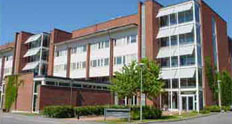Per E. Roland, M.D., Ph.D.

Laboratory for Brain Research
Research Focus
At the Laboratory for Brain Research we focus on the cortical dynamics of visual areas in the mammalian brain. Cortical dynamics is real-time measurements and theoretical descriptions of the computations and communications between the different visual areas in vivo at an appropriate spatial scale. We are in particular focused on the difficult scientific problem of how to explain how the responses of single neurons in computations combine to drive the brain into a particular response or a particular solution to perceptual problem. We found that the cortical neurons at the mesoscopic scale behave surprisingly well, revealing how fundamental physiological variables such as instantaneous firing rate, inward current and membrane potentials reflect the computations and communications done at the population level. We hypothesized that different visual objects and different visual scenes will drive the visual areas into different communications and computations and hence into different spatiotemporal dynamics. From the observed dynamics we aim to derive the principles of the communication and computation dynamics. Given these principles we collaborate with computational neuroscientists to build models reproducing these observed dynamics in a smaller or larger scale. In practice we use laminar recordings with multielectrodes in different visual areas combined with voltage sensitive dye recordings.
Selected Publications
Dynamic depolarisation fields in the cerebral cortex.
Trends in Neuroscience 25: 183-190, 2002
Cortical feedback depolarization waves: a mechanism of top-down influence on early visual areas.
Proceedings of the National Academy of Sciences of the U.S.A. 103: 12586-12591, 2006
Cortical dynamics subserving visual apparent motion.
Cerebral Cortex, epubl ahead of print, 2008
Brain Activation. A critical evaluation.
Wiley-Liss. Blackwell, New York, 704 pp, 2008
Karolinska Institutet
Retzius väg 8
S-17177 Stockholm, Sweden

